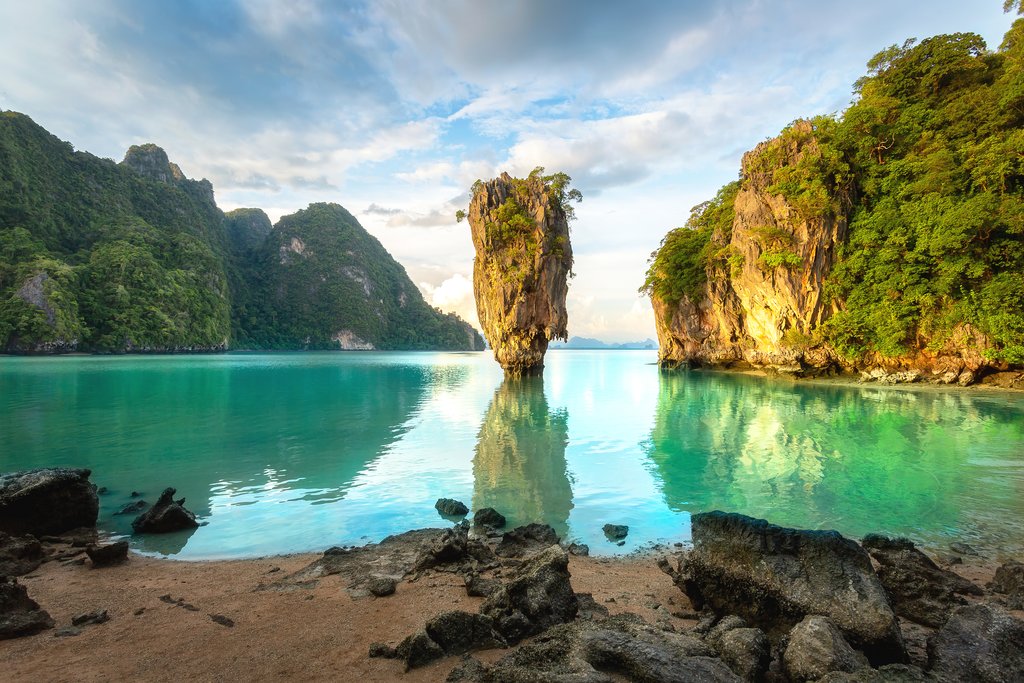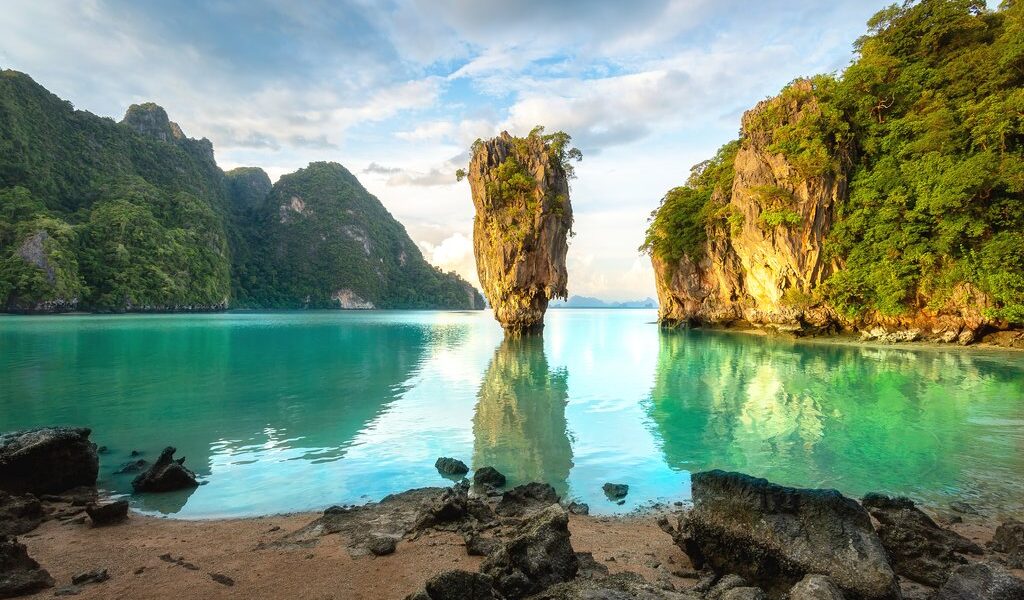
Expect heavy rain in Thailand during the month of August—but that doesn’t necessarily make it a bad time to visit. While it’s right in the middle of the wet season. temperatures stay warm and the extra precipitation makes the countryside come alive with plants and foliage. Even better, the rain deters many travelers, so you’ll have lots of regions to yourself (especially the beaches).
## Exploring Thailand in August: A Comprehensive Guide
August in Thailand presents a unique travel experience. While it falls within the rainy season, it also offers several advantages, including fewer crowds and lower prices. This comprehensive guide will delve into the weather conditions, potential destinations, activities, and events that make August a worthwhile time to visit the “Land of Smiles.”
**Weather Considerations**
Across Thailand, August is characterized by warm temperatures, although the intensity of the heat is generally less oppressive than during the peak months of March and April. Expect daytime highs to hover around 90 to 91 degrees Fahrenheit. It’s important to note that there can be slight regional variations. The southwestern coast and the mountainous regions of the north tend to experience marginally cooler temperatures. Evenings provide little respite from the warmth, with average lows remaining around 75 to 77 degrees Fahrenheit.
Rainfall patterns also vary considerably throughout the country. The northern region, particularly around cities like Chiang Mai, experiences the highest rainfall, making August the wettest month of the year in that area. On average, Chiang Mai sees rain on approximately 21 days during the month. Similarly, the beaches situated along the Kra Isthmus also tend to be quite wet. The western coast of the Kra Isthmus generally receives slightly less rainfall compared to its eastern counterpart. In contrast, Bangkok and the central region of Thailand tend to be the driest, with an average of about 15 rainy days in August.
It’s important to be prepared for potentially intense rainstorms, which can often be accompanied by thunder, lightning, and the possibility of localized flooding. In extreme situations, these storms can even necessitate temporary evacuations in vulnerable areas. However, it’s worth emphasizing that these downpours are typically short-lived, even on the rainiest days. The majority of rainfall tends to occur during the afternoon and evening hours. Therefore, it’s entirely possible to experience stretches of pleasant weather even during the heart of the wet season, with many days offering sunshine and clear skies for extended periods.
**Advantages: Crowds and Costs**
Despite the prevalence of rain, August can actually be an opportune time to explore Thailand, particularly for travelers who are not averse to occasional showers. The primary advantages of visiting during this period are the significantly reduced crowds and the correspondingly lower costs. With the exception of Bangkok, which continues to attract a steady stream of visitors, most regions of Thailand, especially the north and the coastal areas, experience a noticeable decrease in tourist numbers. This translates to a more relaxed and authentic travel experience, allowing you to immerse yourself in the local culture without the distractions of large crowds.
The off-season also brings substantial savings on accommodation. Hotels frequently offer attractive discounts, sometimes reducing room prices by as much as 50%. Similar deals can often be found on various activities and tours. Moreover, smaller tour groups provide a more personalized experience, affording you ample opportunity to engage with your guide, ask questions, and proceed at a more leisurely pace.
**Destination Recommendations**
Bangkok remains an excellent choice for travelers visiting Thailand in August. The capital city boasts a wealth of indoor attractions, including museums, temples, world-class restaurants and vibrant nightlife, making it relatively impervious to the rainy weather. In fact, many find the air quality to be improved during the rainy season, with the frequent showers helping to clear the city’s often-noticeable smog. The Grand Palace remains popular, but even here the lines are shorter in August.
The southern peninsula presents another attractive option, provided you exercise caution and monitor local weather conditions to ensure there are no road closures due to flooding. While the coasts can be wet, the downpours are typically confined to the afternoons, leaving the mornings free for enjoying the beaches. The absence of crowds allows for a more tranquil beach experience, and many luxury hotels offer discounted rates, making it possible to indulge in a stay at a high-end resort for a fraction of the usual cost. Furthermore, the southern peninsula offers a range of indoor activities, including temple visits, spa treatments, and cooking classes.
The northern region, while undeniably wet, can also be rewarding, particularly for nature enthusiasts and those seeking a less crowded experience. The heavy rainfall transforms the landscape into a lush, verdant paradise, with vibrant foliage everywhere. Moreover, you will have the region virtually to yourself. If you appreciate nature and don’t mind a bit of dampness, August provides an ideal opportunity to don a rain jacket and explore the region’s natural beauty without the throngs of tourists. As with the coast, it’s crucial to stay informed about local weather conditions and potential hazards before embarking on any excursions.
**Things to Do in August**
In Bangkok, a visit to Wat Pho (the “Temple of the Reclining Buddha”) is a must. This iconic temple offers a fascinating glimpse into local religious traditions and history. The colossal Reclining Buddha statue, measuring 50 feet high and 150 feet long, symbolizes the Buddha’s entrance into Nirvana. The Grand Palace, another major tourist attraction, served as the residence of Thai kings for centuries. For a culinary adventure, explore the Thonglor or Sathorn districts, known for their trendy restaurants and bars.
If you venture to the southern coasts, consider a trip to Phang Nga Bay near Phuket along the Andaman coast, renowned for its stunning limestone cliffs and emerald-green waters. A tour of Phi Phi Island is another popular option. You might explore the fishing village of Ban Samchong and unwind on the pristine beaches of Khao Lak.
On the eastern side of the Gulf of Thailand, Ko Samui and Hua Hin offer excellent opportunities for snorkeling, scuba diving, surfing, and sea kayaking. If the rain sets in, treat yourself to a rejuvenating massage at one of the many luxurious day spas or take a cooking class at the Samui Institute of Thai Culinary Arts (SITCA) or the Koh Samui Smiley Cook.
For those who brave the northern region, a visit to the Elephant Valley Thailand sanctuary in Chiang Rai provides an ethical and educational experience. Alternatively, trek to the Doi Suthep temple for breathtaking views of Chiang Mai. In Pai, you can relax in the Tha Pai Hot Springs or explore the Ban Santichon Chinese Village.
**August Events**
A significant event in August is Her Majesty the Queen’s Birthday, celebrated on August 12th. Similar to the King’s Birthday Celebration in July, this public holiday honors Her Majesty Queen Sirikit, the former queen consort of King Bhumibol Adulyadej and mother of the current leader, King Vajiralongkorn. The day is also observed as Mother’s Day in Thailand.
**Final Thoughts**
Traveling to Thailand in August presents both challenges and rewards. By understanding the weather patterns, taking advantage of the reduced crowds and lower prices, and carefully selecting your destinations and activities, you can create an unforgettable and enriching travel experience. Embrace the rain, explore the diverse landscapes, and immerse yourself in the vibrant culture of this captivating country.
**(Word count: 1172)**
B-2591

